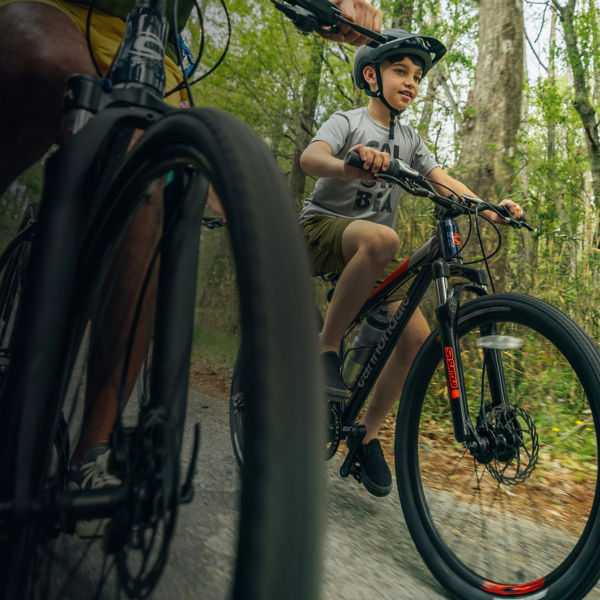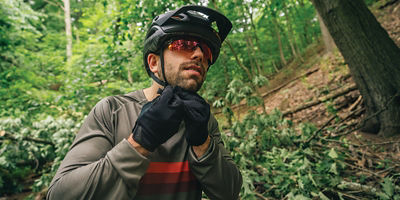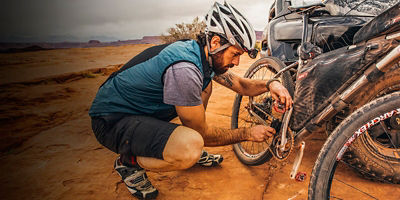
Whether you’re hustling on your favorite stretch of tarmac, exploring a gravel road, or bombing steep singletrack, few factors are as important for sustaining your ride as staying hydrated. Replenishing your fluids won't just keep you comfortable; it’s essential for performing at your best and staying safe on the bike.
There are two main options for on-bike hydration: water bottles and cycling-specific hydration packs. This guide will help you determine what hydration solution is best for you.
Questions To Ask Yourself
Before you begin shopping, narrow your hydration needs.
Will I have access to water on my ride?
Carry enough water to get you to the next fill-up location. Don’t carry large amounts of water if you don’t need to.
What do I like having with me on my bike?
When sizing a hydration bag, get enough storage space for the things you need. Anything bigger will add unnecessary weight and bulk.
Which bike will use this on?
Get a pack appropriate for your riding discipline—a streamlined pack for road cycling, for example.
Water Bottles
For many cyclists, the answer to hydration is simple: a water bottle. Cycling water bottles are usually made of flexible plastic that make them easy to grip and squeeze, so you can shoot water from the bottle into your mouth. They hold anywhere from about 12 to 28 ounces of water, and they’re shaped to fit in a bike’s bottle cages or in the back pockets of your cycling jersey. For many, they’re a great option.
Bottles do come with downsides, however. They offer only limited water-carrying capacity, and they can be difficult to use while riding. To overcome those issues, a cycling-specific hydration pack is often the best answer.
Cycling Disciplines
Where and how you ride will determine the kind of hydration pack you need. Here are some common types to know.
Mountain Biking Packs
Mountain biking hydration packs are often larger and offer more space for non-liquid cargo like extra layers, rain gear, and food. They generally have a more durable design to deal with bumps and scrapes on the trail, and they’re not usually built for sleek aerodynamics.
Road Cycling Packs
Hydration packs designed for road bikes and city riding are often smaller, with less capacity for gear, and benefit from a sleeker design. The smaller size and improved aerodynamics help you stay streamlined on the bike so you can ride faster.





















